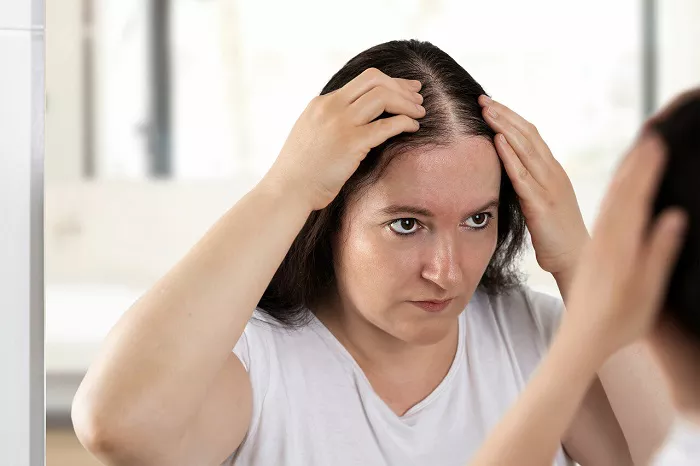New York, NY — That sleek ponytail or tightly braided bun may look stylish, but it could be causing irreversible damage to your hairline. A leading dermatologist has issued a warning about a surprising but increasingly common cause of unexplained hair loss: tight hairstyles.
Dr. Mark Strom, a New York City-based dermatologist, revealed that styles like slicked-back ponytails, buns, and braids can lead to traction alopecia—a form of hair loss caused by persistent tension on hair follicles. “These tight hairstyles can pull on the scalp over time, eventually scarring the follicles and preventing new hair from growing,” Dr. Strom explained.
The Hidden Damage of Hair Tension
Traction alopecia is a condition that develops gradually, often going unnoticed until significant damage has occurred. “It’s not just discomfort,” said Dr. Strom. “If you consistently wear your hair in a way that causes pain or a tight sensation, you’re likely doing long-term harm.”
The pulling motion loosens the hair shaft from the follicle, and repeated tension can eventually lead to scarring—rendering follicles inactive. If detected early, treatments such as topical minoxidil (Rogaine), biotin supplements, corticosteroids, and antibiotics for inflammation may help reverse the condition. But once the follicles are permanently scarred, the hair loss becomes irreversible.
Who’s Most at Risk?
Traction alopecia affects millions, including an estimated one-third of women of African descent in the U.S., due in part to tightly braided or textured hairstyles. People with long, heavy hair, as well as dancers and athletes who regularly secure their hair tightly, are also at heightened risk.
Social media platforms like TikTok have amplified awareness of the condition, with Dr. Strom recently using the platform to emphasize the dangers of hairstyles that apply too much pressure on the scalp—especially around the frontal hairline.
Hair Health Advice: Loosen Up
To prevent traction alopecia and support overall hair health, Dr. Strom recommends opting for looser hairstyles. “Give your hair room to breathe,” he advised. “Avoid rubber bands or tight elastics that increase friction and tension. And never ignore discomfort—pain is your scalp’s way of telling you something’s wrong.”
While treatments exist, prevention remains the most effective strategy. Small changes in styling habits can make a significant difference in preserving hair density and preventing permanent damage.
For those seeking hair health tips, adopting gentler hairstyles, avoiding harsh styling tools, and giving the scalp periods of rest can be essential steps in maintaining thick, healthy hair well into the future.
Related Topics:
- 5 Proven Herbal Remedies That Naturally Support Hair Growth
- Expert-Backed Tips for a Healthier Scalp and Thicker Hair
- Beat the Heat in Style: Top 5 Summer Hairstyles with Expert Hair Health Tips


